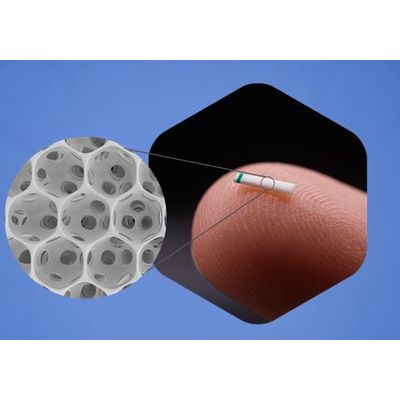

- Home
- Companies
- iSTAR Medical SA
- Applications
- Micro-Invasive Glaucoma Surgery Device ...

Micro-Invasive Glaucoma Surgery Device (MIGS) for Glaucoma Treatment - Medical / Health Care
There are a range of possible treatments for Glaucoma, depending on the severity of disease progression. Treatments aim to reduce eye pressure by aiding fluid to drain from the eye. Physicians decide which treatment is best for a patient’s individual condition.
Traditional treatment options
Traditional treatment options to delay glaucoma progression have significant limitations:
Eye drops
- Usually a non-invasive, safe, first treatment option
- Lack of patient compliance due to forgetfulness, difficulty instilling drops, cost, or side-effects (eg. dry eye) affects efficacy ¹ ²
- Drops may lose efficacy over time requiring additional drops or more invasive treatment
- Laser trabeculoplasty are a safe option used early in treatment, which can eliminate drops and delay the need for invasive surgery
- Treatment may need to be repeated over time as efficacy wanes ³
- Drops may need to be added to increase efficacy
- Invasive solutions, such as trabeculectomy or shunts, are effective offering up to 50% IOP reduction
- They may cause serious, irreversible complications affecting eye structure 4
- Invasive surgery requires significant recovery time and follow-up to manage the bleb
As a result, traditional treatment options may involve costly ongoing management and/or re-interventions.

New Minimally-Invasive Bleb Surgery (MIBS) devices can have fewer complications than traditional invasive surgery, but may still require significant follow-ups to manage the bleb.
Minimally-Invasive Glaucc Surgery (MIGS) MIGS devices are widely considered the future of treatment
- MIGS devices are the smallest eye implants ever used
- The procedure is less invasive using an ab interno approach through a small corneal incision
- MIGS devices are known for their safety
The MINIject® supraciliary MIGS addresses the limitations of traditional treatment by offering a minimally-invasive option that is safe, highly-effective and is sustained over time.
